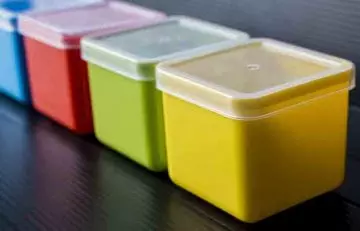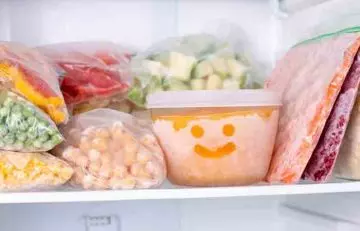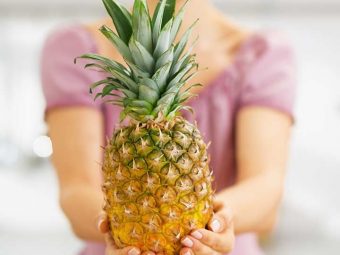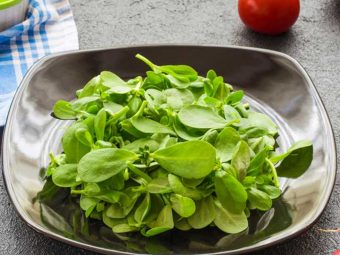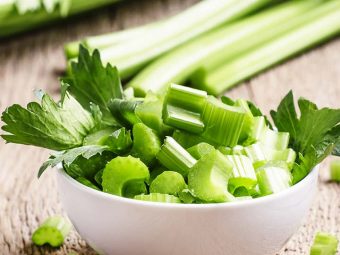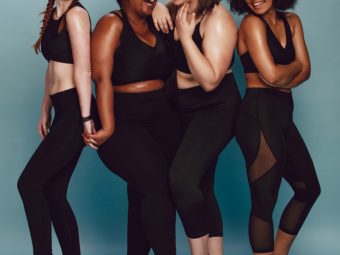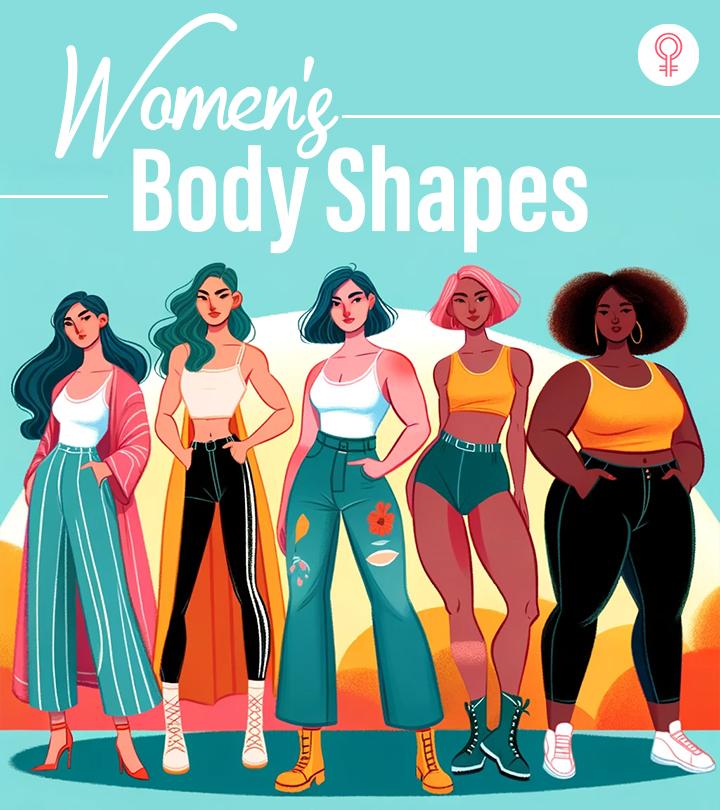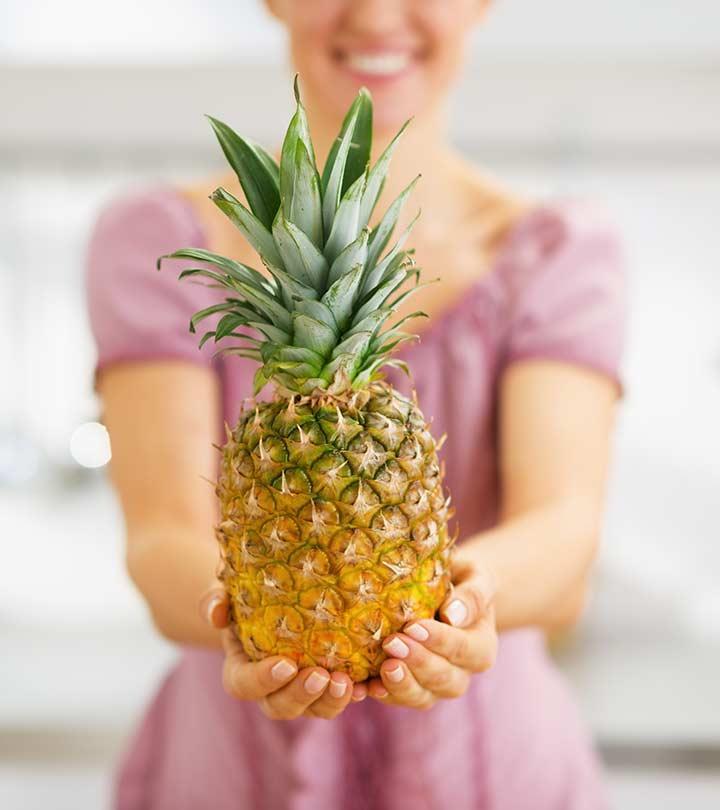Is It Safe To Freeze Food In Plastic Containers?
Sure, they are extremely convenient, but do consider their impact on your health.
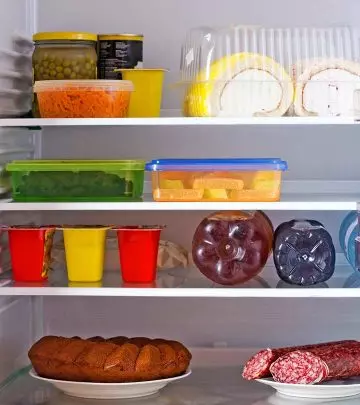
Image: Shutterstock
Our hectic lives often force us to stock up on foods in the refrigerator. While this may save time, how safe is it to freeze food in plastic containers? Plastic is becoming a go-to material for multiple purposes. Its versatility is making it a part of our daily lives. However, there are many queries about the use of plastic as a packaging material for packaging or storing perishable food. Keep reading to understand if plastic is safe for food storage and any safer options of plastic that you may consider.
In This Article
Types Of Plastics
Generally, plastic food containers are made of different kinds of plastics. Usually, the triangle mark contains a ‘resin identification number’ inside it. This number actually denotes the degree of recyclability of the plastic, and the triangle determines if the plastic is recyclable or not.
Safe Plastics
Some plastics are preferred to others when it comes to storage and packaging of food. Generally, safe plastics include materials like:
1. Polyethylene Terephthalate (PET Or PETE):
This is the most popular form of plastic container in the market. Used to store all kinds of foods and beverages like water, juice, mayonnaise etc., PET jars can be reused once they are cleaned with soap water. However, a word of caution: research shows that washing PET bottles over and over again can result in the plastic’s toxic and carcinogenic chemicals getting into the stored food or water, so it might not be suitable for long-term storage. Discard your PET jar if it gets cracked or appears cloudy.
2. High-Density Polyethylene (HDPE):
Another safe plastic used to make milk jugs and water bottles that can handle cold temperatures, high-density polyethylene does not release toxic or carcinogenic chemicals into food or water and is accepted by most recycling companies.
3. Low-Density Polyethylene (LDPE):
These types of plastics don’t release chemicals into stored food, but they aren’t readily accepted by recyclers. LDPE plastics are usually used to make sealable sandwich bags, plastic cling-wrap, and squeezable condiment bottles.
4. Polypropylene (PP):
This type of plastic container does not release any chemicals into food or water, but not all organizations recycle polypropylene. It is primarily used to make yogurt and other reusable airtight snack containers.
5. Bio-Plastic:
This plastic is usually used to make plastic cups, picnic plates and utensils. It is created using renewable sources like corn, potatoes, sugarcane and other starchy foods.
 Did You Know?
Did You Know?Unsafe Plastics
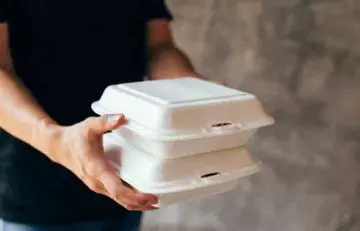
These plastics are quite dangerous and can cause chronic diseases. Unsafe plastics include:
1. Polyvinyl Chloride (PVC):
This type of plastic is regularly used to make cling-wraps and other plastic containers. PVC releases dioxins that are classified as human carcinogens. PVC also contains phthalates that can lead to improper hormonal function, and can even cause hormonal damage.
2. Polystyrene (PS):
This plastic is used to make cups, cartons and take-out containers. The popular white foam cup is made up of polystyrene, whose manufacture releases carcinogenic and toxic chemicals that can lead to many health conditions.
3. Polycarbonate (PC):
Usually used to make water cooler bottles and baby bottles, polycarbonate contains bisphenol A, which has known hormone-disrupting qualities.
Freezing Food
Usually, the best plastic container to store frozen food is a moisture-vapor-resistant plastic container with a lid. These plastics are quite safe and can be used for years. On the other hand, you can consider using Pyrex glass containers with lids to freeze, microwave and store food. These are available quite easily and pose no threats, unlike toxic and carcinogenic chemicals that are used to make plastic (1).
Although freezing food in plastic containers is generally allowed, there are a few things one needs to consider before choosing these containers. Check out the section below to know more.
Choosing Containers To Freeze Food
Selecting suitable containers for freezing food is essential to maintain freshness and prevent freezer burn. Opt for airtight, freezer-safe containers made of materials like BPA-free plastic. Ensure the containers have minimal headspace to reduce the introduction of air, which can lead to freezer burn. Choose containers with a tight seal to prevent odors and flavors from permeating the food. Consider using containers with the flexibility to expand, accommodating the food as it freezes. Label containers with the date and contents for easy identification. A thoughtful selection of freezer containers ensures preserved quality, taste, and convenience when thawing and consuming frozen foods.
 Quick Tip
Quick TipAlthough storing food in plastic containers appears convenient, know how safe it is in the section below.
Is It Safe To Freeze Food In Plastic Containers?

You have looked at the different safe and unsafe plastics, and what kinds of plastics you can effectively use to freeze food. Plastic has many domestic and industrial uses, but it is not a good material to cook, reheat, freeze and store food in, even if the plastic is marked microwave safe or temperature resistant. So the next time you are about to freeze some food, consider wrapping it in an aluminum foil instead of a cling–wrap for food safety.
And please tell us about your methods of storing food. Leave a comment below!
Infographic: How To Store Food Safely In The Freezer
Our fast-paced lifestyles force us to store leftover or pre-prepared food in the freezer. We usually have our foods wrapped in cling film or plastic boxes thanks to their ease of use. But how safe is plastic for storing food? Are there any alternatives? Check out the infographic below for a quick glance at the types of unsafe plastics and the better alternatives you can replace these with. Illustration: StyleCraze Design Team
Freezing food in plastic has become very common nowadays because of hectic work schedules, which generally demand stocking up of food. However, many are worried about plastic usage for food freezing or storing. Plastics are divided into safe plastics and unsafe plastics. Safe plastics are generally preferred over unsafe ones for food packaging. However, compared to other materials like glass, the plastic weighs more on the unsafe side even after labeling safe. Hence, minimize food freezing in plastic and consider wrapping it in an aluminum foil or freezing it in a glass container with a lid.
Frequently Asked Questions
What is the best container to freeze food in?
Freezer-safe glass containers are the best option for freezing food in, as there is no risk of chemical leach. However, certain plastic containers also work just as well.
Are Rubbermaid plastic containers freezer safe?
Yes, Rubbermaid plastic containers are designed from BPA-free plastic and crafted to be freezer-safe.
Is it safe to freeze food in Tupperware?
Yes, Tupperware are airtight and freezer-safe containers made of polypropylene and low-density polyethylene plastics, making it safe for daily use
Does freezing plastic release toxins?
No, anecdotal evidence suggests that there is no harm in freezing plastics. It works against the chemicals as they do not easily diffuse in cold temperatures.
How long can you keep frozen food in plastic bags?
While different foods have different shelf lives, most food can be stored for up to 1-2 months in the freezer.
Key Takeaways
- Plastic containers made of natural ingredients, such as potatoes or corn are considered safe for use for food preservation.
- Containers made of polystyrene or polycarbonate may cause hormonal imbalance. This is also true of ice trays.
- Pyrex glass or moisture-proof containers are suitable for storing frozen food.
- Plastic containers are considered unsuitable for reheating, cooking, freezing, and storing food.
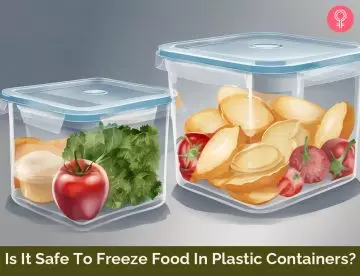
Image: Stable Diffusion/StyleCraze Design Team
Wondering how to store food in the freezer? Watch this video to find out whether glass or plastic containers are the best to store food when freezing them.





